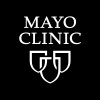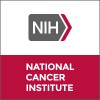
Lenalidomide and Rituximab in Subjects With Previously Untreated Indolent Non-Hodgkin's Lymphoma...
Non Hodgkin's LymphomaLenalidomide has been shown to have single agent activity in indolent Non-Hodgkin's Lymphoma. It is approved for the treatment of multiple myeloma and myelodysplastic syndrome. Rituximab is effective as a single agent and in combination with chemotherapy for indolent Non-Hodgkin's Lymphoma. The purpose of this study is to see how well giving lenalidomide together with rituximab works in treating patients with previously untreated indolent Non Hodgkin's Lymphoma. Lenalidomide will taken at 20 mg daily, days 1-21 of a 28 day cycle, to be continued until the disease progresses, unacceptable side effects or after twelve cycles if the patient is responding well. Rituximab 375 mg/m2/wk x 4 weeks will begin on Day 15 of cycle 1. After 4 cycles of therapy, if patients respond well to treatment, patients will receive a second course of Rituximab. Blood samples will be collected to assess how the immune system is functioning.

Randomized, Open-label, Two-arms, Phase III Comparative Study Assessing the Role of Involved Mediastinal...
Primary Mediastinal B-cell LymphomaPrimary mediastinal large B cell lymphoma is treated with a combination of chemotherapy and the monoclonal antibody rituximab (chemoimmunotherapy). Following chemoimmunotherapy patients receive radiation therapy if they have residues which may be active tumour. However at the end of chemoimmunotherapy the majority of patients show tissue scarring that is not necessarily active tumor. In recent years, PET/CT has proved to be a good tool to accurately identify active tumor from scar tissue in patients treated for mediastinal lymphoma.The purpose of this trial is to test whether radiation therapy is really necessary in patients where PET/CT has shown that the tumor is no longer active. Therefore we will compare radiation treatment with careful observation. Patients that at the end of conventional treatment of chemoimmunotherapy have a negative PET/CT (i.e., without residues suspected to contain active tumor), will randomly assigned to two different treatment groups: one treatment group will receive the radiation treatment, and the other treatment group will receive careful observation. The trial is planned according to a non-inferiority design aimed at demonstrating that progression free survival after the experimental treatment (observation) is not worse than after the standard comparator (mediastinal irradiation.Participation in this study could spare patients with complete remission at the end of chemo immunotherapy (PET/CT negative) radiation therapy that may be unnecessary.

Vaccine Therapy in Treating Patients With Lymphoplasmacytic Lymphoma
Lymphoplasmacytic LymphomaThis phase I trial studies the side effects and best dose of vaccine therapy in treating patients with lymphoplasmacytic lymphoma. Vaccines made from a person's cancer cells may help the body build an effective immune response to kill cancer cells.

Ofatumumab for Minimal Residual Disease (MRD) and Maintenance Therapy
LeukemiaLymphomaThe goal of this clinical research study is to find out if ofatumumab can control CLL or SLL that is left after chemotherapy or chemoimmunotherapy. The safety of the drug will also be studied.

Tandem Stem Cell Transplantation for Non-Hodgkin's Lymphoma
LymphomaNon-HodgkinThis is a research study testing a new approach to treating high-risk non-Hodgkin's lymphoma consisting of an autologous hematopoietic (blood) stem cell transplant (using a patient's own hematopoietic cells) followed by a non-myeloablative allogeneic transplantation (transplant from another individual). The investigators hypothesize that the addition of the second non-myeloablative transplant will improve the chances for long-term control of lymphoma.

Rituximab and Combination Chemotherapy in Treating Patients With Previously Untreated Mantle Cell...
Mantle-Cell LymphomaThe investigator(s) hypothesize that Rituximab together with combination chemotherapy, followed by Rituximab maintenance therapy, will provide better disease control with improved response rates and overall survival in patients with previously untreated Mantle Cell Lymphoma (MCL).

A Phase II Study of Allo-HCT for B-Cell NHL Using Zevalin, Fludarabine and Melphalan
Graft Versus Host DiseaseLeukemia1 moreRATIONALE: Giving monoclonal antibody therapy, radioimmunotherapy, and chemotherapy before a donor stem cell transplant helps stop the growth of cancer cells and helps stop the patient's immune system from rejecting the donor's stem cells. When the stem cells from a related donor that do not exactly match the patient's blood, are infused into the patient, they may help the patient's bone marrow make stem cells, red blood cells, white blood cells, and platelets. Sometimes the transplanted cells from a donor can also make an immune response against the body's normal cells. Giving tacrolimus and sirolimus before and after transplant may stop this from happening. PURPOSE: This phase II trial is studying the side effects and how well giving indium In 111 ibritumomab tiuxetan and yttrium y 90 ibritumomab tiuxetan together with rituximab, fludarabine, melphalan, and donor stem cell transplant works in treating patients with B-cell non-Hodgkin lymphoma.

Lenalidomide, Rituximab, and Combination Chemotherapy in Treating Patients With Newly Diagnosed...
LymphomaRATIONALE: Lenalidomide may stimulate the immune system in different ways and stop cancer cells from growing. Monoclonal antibodies, such as rituximab, can block cancer growth in different ways. Some block the ability of cancer cells to grow and spread. Others find cancer cells and help kill them or carry cancer-killing substances to them. Drugs used in chemotherapy, such as cyclophosphamide, doxorubicin, vincristine, and prednisone, work in different ways to stop the growth of cancer cells, either by killing the cells or by stopping them from dividing. Giving lenalidomide together with rituximab and combination chemotherapy may kill more cancer cells. PURPOSE: This phase I/II trial is studying the side effects and best dose of lenalidomide when given together with rituximab and combination chemotherapy and to see how well they work in treating patients with newly diagnosed stage II, stage III, or stage IV diffuse large cell or follicular B-cell lymphoma.

Veliparib, Cyclophosphamide, and Doxorubicin Hydrochloride in Treating Patients With Metastatic...
Ann Arbor Stage III Non-Hodgkin LymphomaAnn Arbor Stage IV Non-Hodgkin Lymphoma1 moreThis phase I trial studies the side effects and best dose of veliparib, cyclophosphamide, and doxorubicin hydrochloride when given together in treating patients solid tumors or non-Hodgkin lymphoma that has spread to other areas of the body or cannot be removed by surgery. Veliparib may stop the growth of cancer cells by blocking some of the enzymes needed for cell growth. Drugs used in chemotherapy, such as cyclophosphamide and doxorubicin hydrochloride, work in different ways to stop the growth of cancer cells, either by killing the cells, by stopping them from dividing, or by stopping them from spreading. Giving veliparib, cyclophosphamide, and doxorubicin hydrochloride may kill more cancer cells.

Genetically Engineered Lymphocyte Therapy After Peripheral Blood Stem Cell Transplant in Treating...
Recurrent Grade 1 Follicular LymphomaRecurrent Grade 2 Follicular Lymphoma3 moreThis phase I/II trial studies the side effects and best dose of genetically engineered lymphocyte therapy and to see how well it works after peripheral blood stem cell transplant (PBSCT) in treating patients with high-risk, intermediate-grade, B-cell non-Hodgkin lymphoma (NHL). Genetically engineered lymphocyte therapy may stimulate the immune system in different ways and stop cancer cells from growing. Giving rituximab together with chemotherapy before a PBSCT stops the growth of cancer cells by stopping them from dividing or killing them. Giving colony-stimulating factors, such as filgrastim (G-CSF), or plerixafor helps stem cells move from the bone marrow to the blood so they can be collected and stored. More chemotherapy or radiation therapy is given to prepare the bone marrow for the stem cell transplant. The stem cells are then returned to the patient to replace the blood-forming cells that were destroyed by the chemotherapy. Giving genetically engineered lymphocyte therapy after PBSCT may be an effective treatment for NHL.
